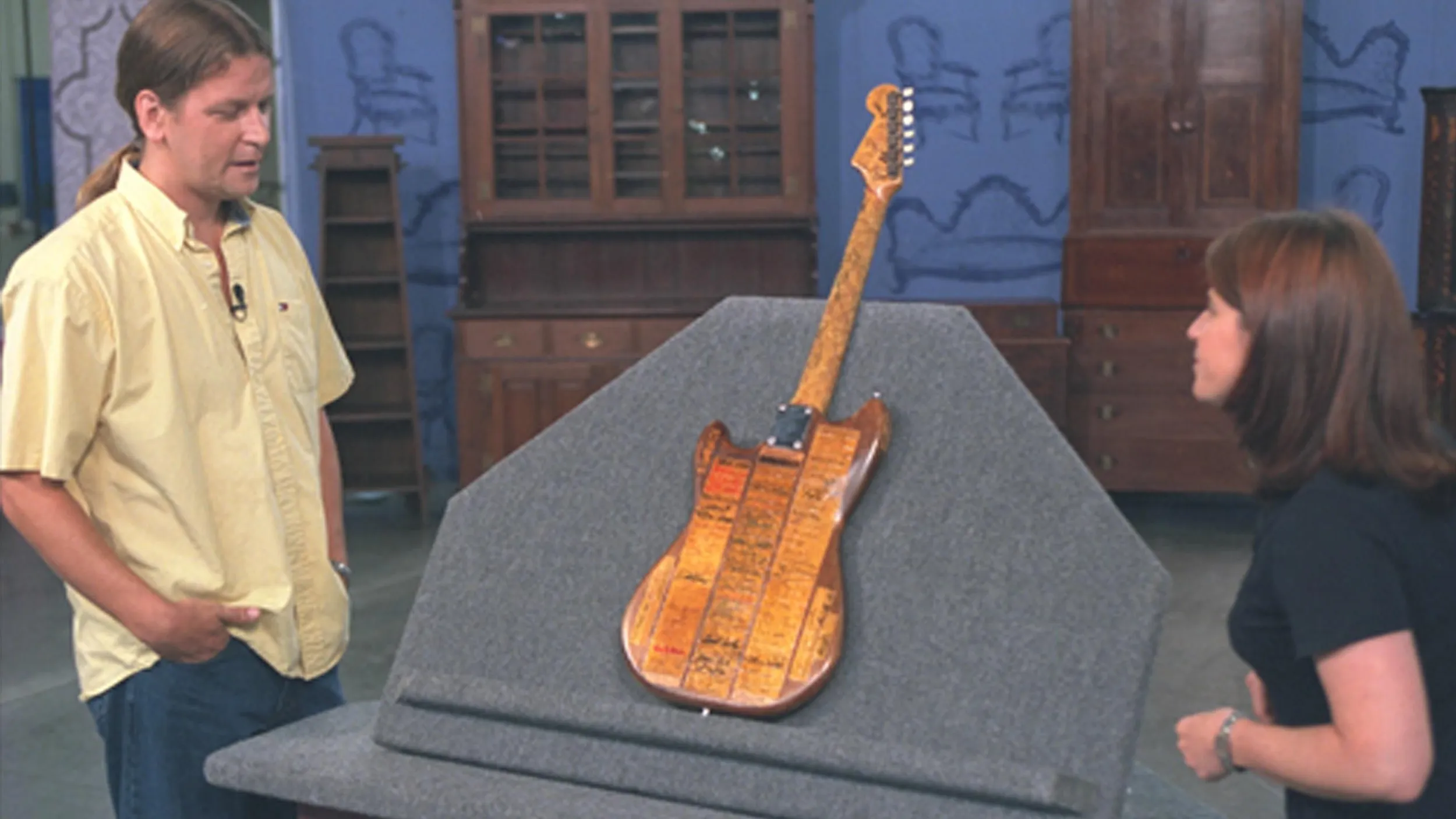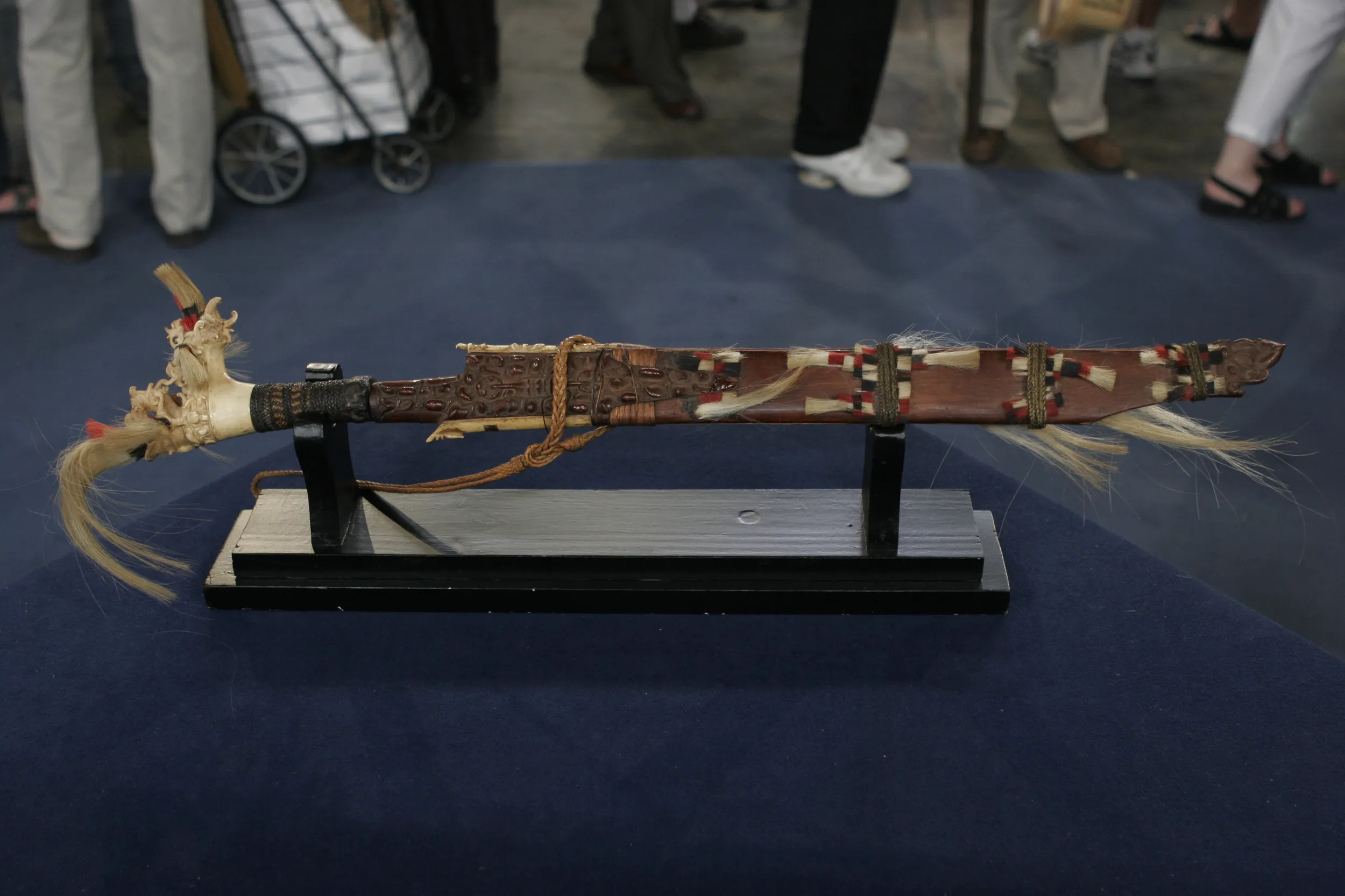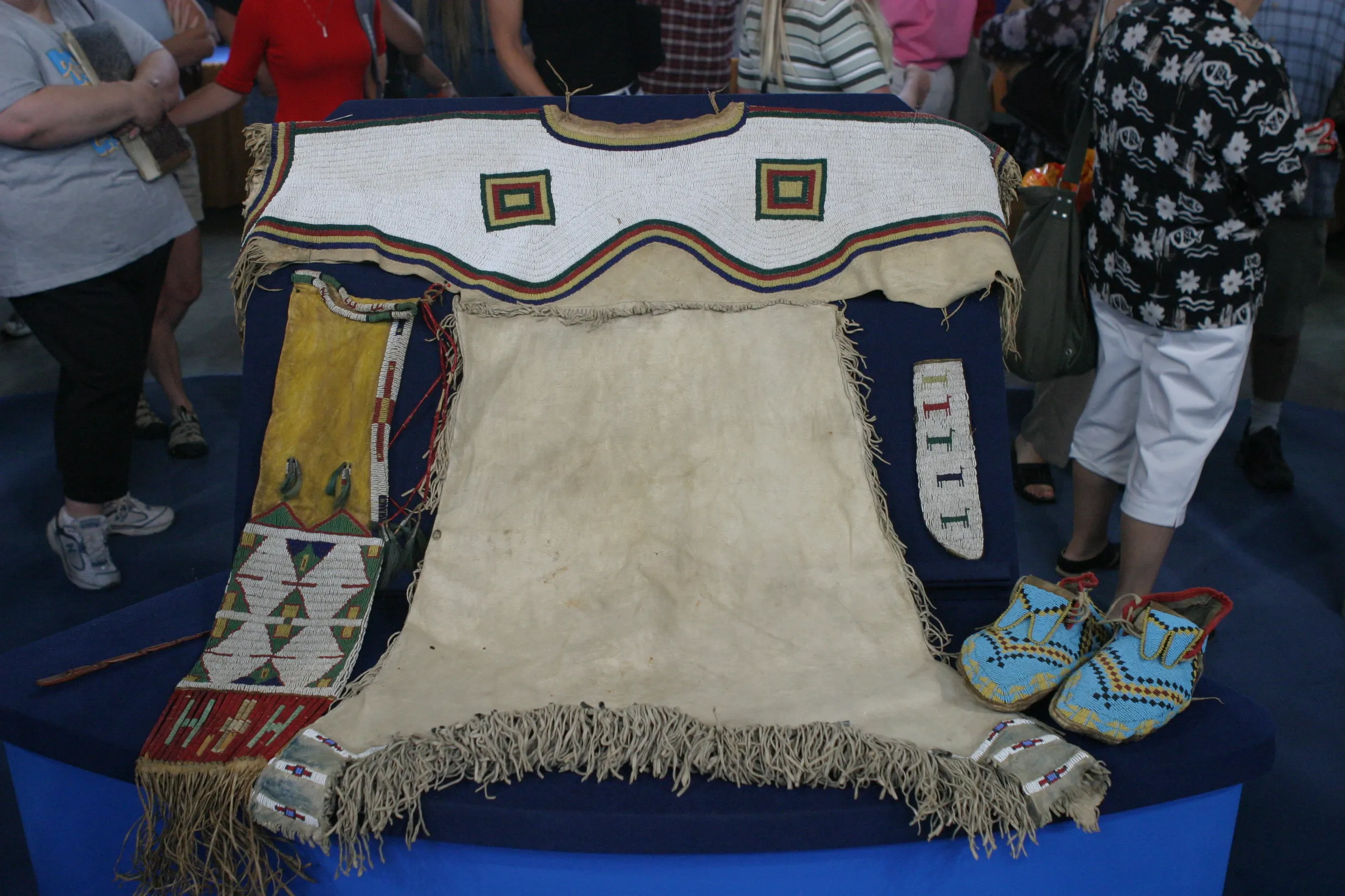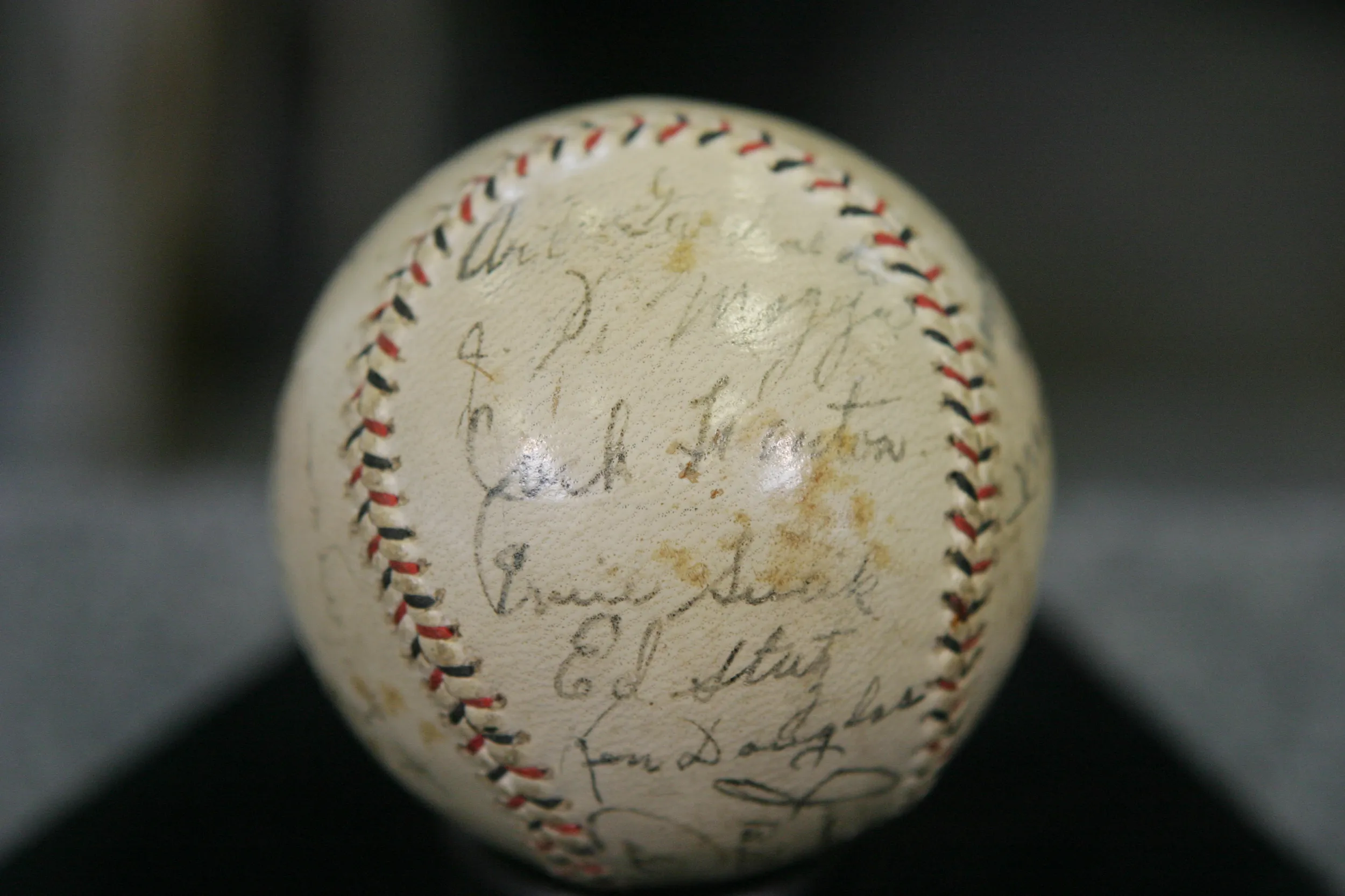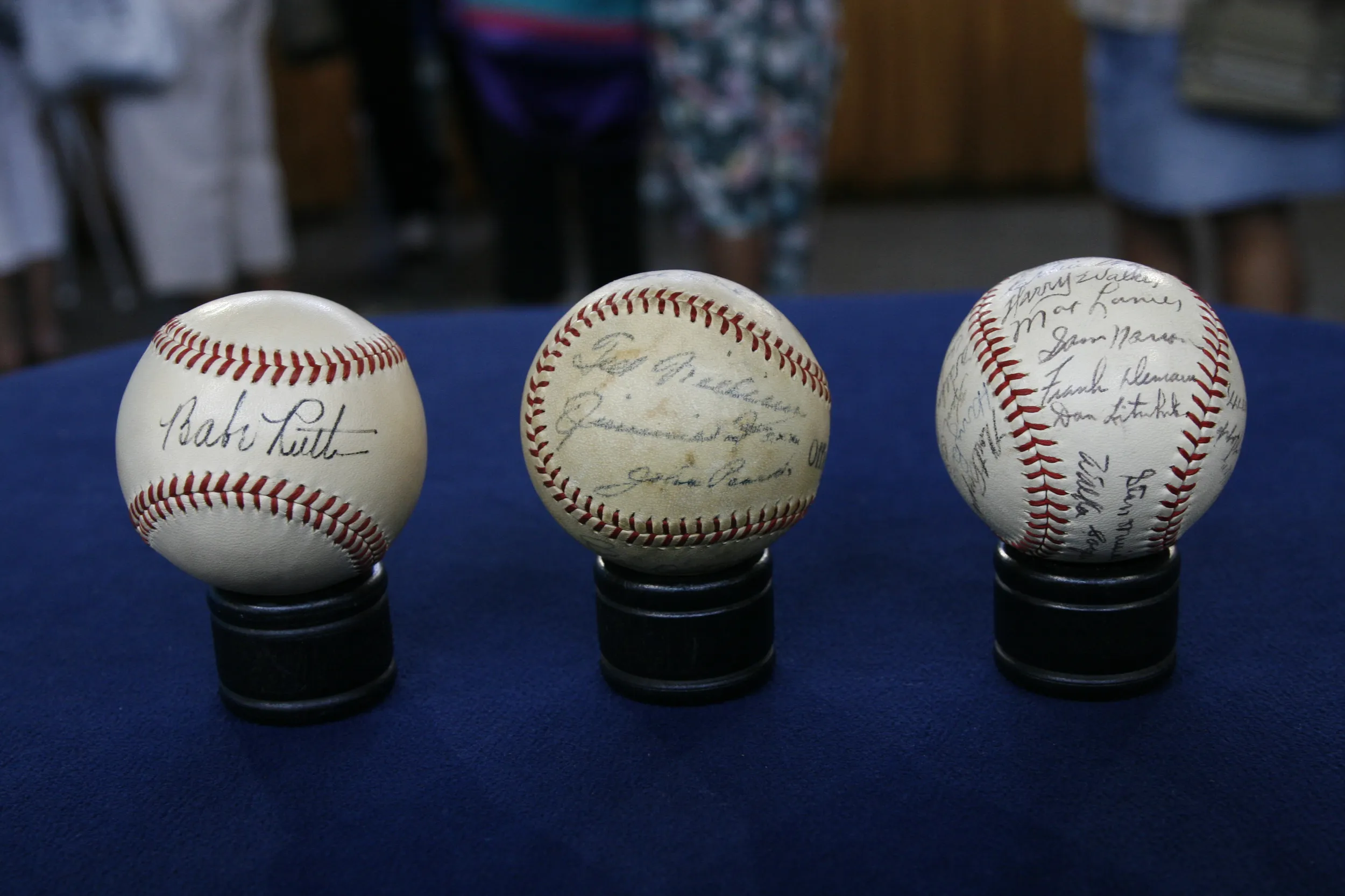GUEST: I was told by my grandmother that this belonged to her father, so my great-grandfather.
APPRAISER: Great-grandfather.
GUEST: Yes. He was a career soldier, and he picked this up while he was down around Mexico chasing Pancho Villa around the turn of the century.
APPRAISER: Well...I guess I've got the, uh...as we say here sometimes, good news and bad news.
GUEST: Okay.
APPRAISER: Um, this is actually a very interesting thing you've brought into the ROADSHOW today. It unfortunately...in terms of your story, in Mexico and Pancho Villa, this was made in what is now the Yukon, or the Yukon-Alaska border. This is actually made by Athapaskan- speaking tribes, as I said, from the Yukon area, western-eastern Alaska, probably a tribe by the name of the Gwich'in, and these were used by men. They were hunting knives, hunting daggers, and I'll first show you, talk about this a little bit. They were fantastic metalsmiths, and they would get old files in trade, files that had been worn out that were of no use to the English anymore, and they would make these extraordinary daggers, and you can see the beautiful fluting of the blade and these wonderful curlicues. We call them ram's-horn volutes, and wrapped in hide so the hunter wouldn't cut himself. These were worn over the neck, and so they were carried right on the middle of the chest, and the beads here are quite interesting. These were obtained from Russia. We call them pony beads because of the large size. Um, with the use of these beads, we can accurately date this to about 1850. Another interesting aspect of this is these shells right here are called dentalium shells, and what's interesting about those is they are only found one place in the entire world. That's off the west coast of Vancouver Island. They were extremely valuable to a whole number of native groups, and they were traded, and they were used as currency. It was considered as a form of money, so it signified that the man who owned this, with these shells, was probably a pretty important man. Has this ever been appraised?
GUEST: No, not that I know of.
APPRAISER: Well, I can tell you that in our gallery, we sold a dagger for $3,500 about three months ago. The sheath in itself is worth probably in the neighborhood of $5,000, and I think together as a pair, probably in the neighborhood of $8,000, $10,000.
GUEST: Oh, my gosh.
APPRAISER: Thank you very much for bringing it in.
GUEST: Thank you.

